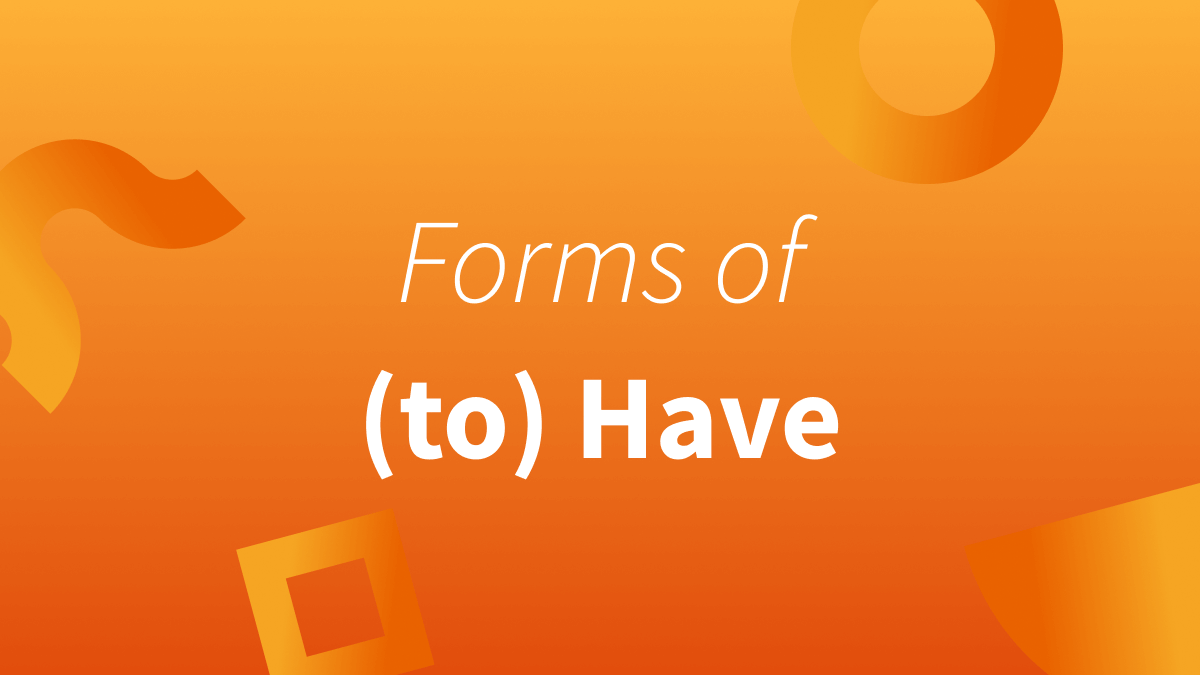Quick Summary on Forms of “To Have”
- To have is an irregular verb that can be used as a main or auxiliary verb. Its forms are have, has, had, and having.
- ○ I have a lot to do tomorrow.
- ○ He has to win three games to make it to the finals.
- ○ Luis had to arrive at the airport at 3:00 PM.
- ○ We’re having a party tomorrow.
Have you ever wondered what type of word have is? Or maybe you’re here because you know it’s a verb, but want to know what type. We’ll be going over this, plus we’re also going to show you the conjugation of to have and example sentences.
What Type of Verb Is “To Have”?
To have can function as a main verb, but it can also be a helping verb (also known as an auxiliary verb). Whether you’re using it as a main verb or helping verb, the forms of to have are have, has, had, and having.
Please note that had is both the past tense and past participle, as you can see in the following table.
Conjugated Forms of “To Have”
“To Have” as a Main Verb
As a main verb, to have has several different uses, but it’s most commonly used to indicate possession or “to stand in a certain relationship to.”
Do you have a pencil I can borrow?
I have three brothers and one sister.
To have can also mean “to experience something.”
We had a great time.
Here are a few more uses of to have as a main verb:
1. “Consist of”
The car has many innovative features.
2. “Demonstrate a quality or feature”
They have an unusual sense of humor.
3. “Should” or “must” (just when preceding “to”)
I have to help.
4. “To show or ask if something is available”
Do you have time?
5. “To entertain in the mind” or “express a feeling”
I had a feeling something bad was going to happen.
6. “Put or keep in a position”
I had my back to her.
7. “To organize or hold an event or activity”
Let’s have a reunion soon.
“To Have” as an Auxiliary Verb
To have is one of English’s three auxiliary verbs (along with to be and to do). An auxiliary verb adds more information (such as tense, mood, and voice) to the main verb.
As an auxiliary verb, to have is used with a past participle to form future present perfect and past perfect.
The structure for using to have as an auxiliary verb that indicates present perfect tense is [“have” or “has”] + [past participle].
I have scrubbed the walls.
She has supported me all throughout my career.
The structure that indicates past perfect tense is [“had”] + [“past participle”].
Clarence had betted against the team.
To form the future perfect, follow this structure: [will “have”] + [past participle]
I will have eaten too many desserts.
Having is the continuous form of to have and can be used as either the main verb or auxiliary verb.
The children were having a playful competition.
(Main verb)
Having said that, the parents enjoyed themselves too.
(Auxiliary verb)
It’s important to note that have can function as a main verb and auxiliary verb within the same sentence. For example:
I have had several meals at that restaurant.
In this example, have is the auxiliary verb and had is the main verb. In the following example, had is also both the main verb and auxiliary.
Thomas had had a difficult time before he enrolled in the school.
Using “To Have” Correctly
As you can see, have has a plethora of uses. Therefore, it’s a word that is used quite frequently in the English language. If you find yourself overwhelmed trying to use the correct form of to have, you should use LanguageTool as your spelling and grammar checker. This multilingual writing assistant can ensure proper usage of the verb to have and check for all types of errors.

